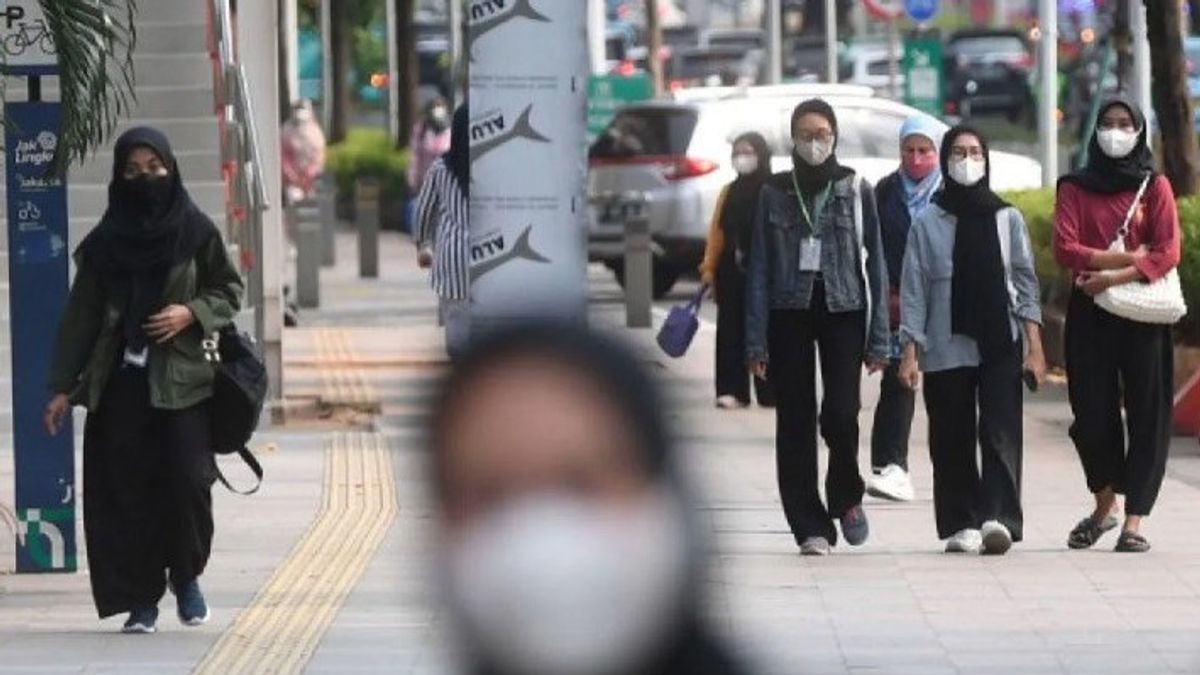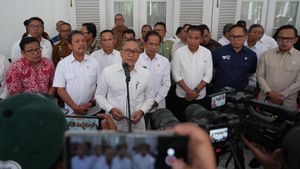JAKARTA - President-elect for the 2024-2029 period Prabowo Subianto has ambitions to boost Indonesia's economic growth by up to eight percent. However, seeing the trend of domestic economic slowdown in recent years, will Prabowo's ambitions be achieved?
This was conveyed by Prabowo Subianto in the Launch of the One One Map 2.0 Policy Geoportal on July 18, 2024.
Earlier, the Coordinating Minister for the Economy said that we are optimistic that we can achieve more than five percent growth. If I am even more brave. We must dare to set higher targets. If I am optimistic, I can reach eight percent," said Prabowo.
So optimistic, Prabowo joked that he dared to bet with several neighboring ministers. If successful in achieving the target of only eight percent once in five years, the neighboring country minister will treat Prabowo for dinner.
However, seeing the slowdown in economic growth in the past few years, senior economist from the Bright Institute Awalil Rizky is pessimistic that this will be achieved.
Bambang Brodjonegoro in April 2019 said that one of the characteristics of developed countries is a country whose population is dominated by the middle class. At that time he was still the head of the National Development Planning Agency (Bappenas).
Bambang said that the middle class population has an important role in increasing consumption, encouraging economic growth, and bringing Indonesia to become a high-income developed country by 2045.
This was also expressed by a senior economist from the Bright Institute Awalil Rizky, who said that the middle class is an important factor in the economic performance of a country. He explained that on the demand side, aggregates have an impact on consumption, which if it increases rapidly, will encourage economic growth. This will then affect the level of welfare, reduce inequality, and strengthen national economic resilience.
"On the supply side, the middle class affects through job creation and worker conditions, which if increasing will grow revenue," Awalil said in an online discussion, Tuesday (17/9/2024).
SEE ALSO:
"This will provide broad opportunities for investment in human capital or education, which further has the potential to increase the number of middle class groups in the future," he added.
Back in 2019, when Bambang believed Indonesia would become a developed country in 2045. At that time Bappenas compiled two different scenarios. In the basic scenario, the economy is expected to continue to grow at least 5.1 percent per year. With this scenario, Indonesia has the potential to become a high-income country in 2038 and have the seventh largest economy in the world when celebrating its 100th independence day in 2045.
There is another more ambitious scenario, namely Indonesia will become a high-income country in 2036 and will have the fifth-largest economy in the world in 2045. The condition is that the economy grows 5.7 percent per year consistently.
According to Bappenas' calculations at that time, the number of Indonesian middle class citizens will continue to increase to 85 million in 2020, 145 million in 2030, and 223 million in 2045.
Looking at Indonesia's current socio-economic situation, it seems far from expectations. The Indonesian middle class population actually experienced a decline in the past five years. Middle class residents throughout the 2019-2024 period shrank 9.48 million people to only 47.85 million. Now, the proportion is only 17.13 percent of the total population, down from 21.45 percent compared to five years ago. Whereas the proportion of the middle class is expected to reach around 70 percent of the total population by 2045.
Instead of increasing the number of middle class, socio-economic groups in Indonesia are dominated by middle class candidates. This group figure rose 8.65 million compared to 2019 to 137.5 million people or 49.2 percent of the total population. The second largest group is the vulnerable poor group, which has an expenditure of IDR 582,932 to IDR 874,389 per month. This year, the number of vulnerable poor groups reached 67.68 million or 24.23 percent of the total population.
The government appointed the COVID-19 pandemic as a scapegoat, but a number of economic observers said the problem was not that simple. Awalil Rizky said that the reduction in the middle class indicates poor economic performance during the era of President Joko Widodo (Jokowi) administration. Moreover, this was also followed by an increase in groups towards the middle class and vulnerable poor groups.
This phenomenon increases the risk of the Indonesian economy in the years to come. Especially if there is an external shock or a global condition that worsens, then Indonesia does not have strong enough resilience," Awil said.
Thus, the dream of economic growth of eight percent is almost impossible because the reduction in the middle class almost certainly complicates consumption growth. Even small and medium scale investments will also be eroded.
"Actually, it's not just the middle class, but those who are vulnerable to poverty and those who are poor have more serious problems. Many of them are not classified as poor but are around the poverty line, and are very vulnerable to falling poor. Some of them are only helped by social assistance programs and the like," he concluded.
Awalil concluded that this phenomenon caused the gloomy economic prospects. In fact, the social gap will tend to increase and could have an impact on social and political instability. Plus the weakening of the national economic resilience in the event of external shocks in the years to come.
The English, Chinese, Japanese, Arabic, and French versions are automatically generated by the AI. So there may still be inaccuracies in translating, please always see Indonesian as our main language. (system supported by DigitalSiber.id)


















